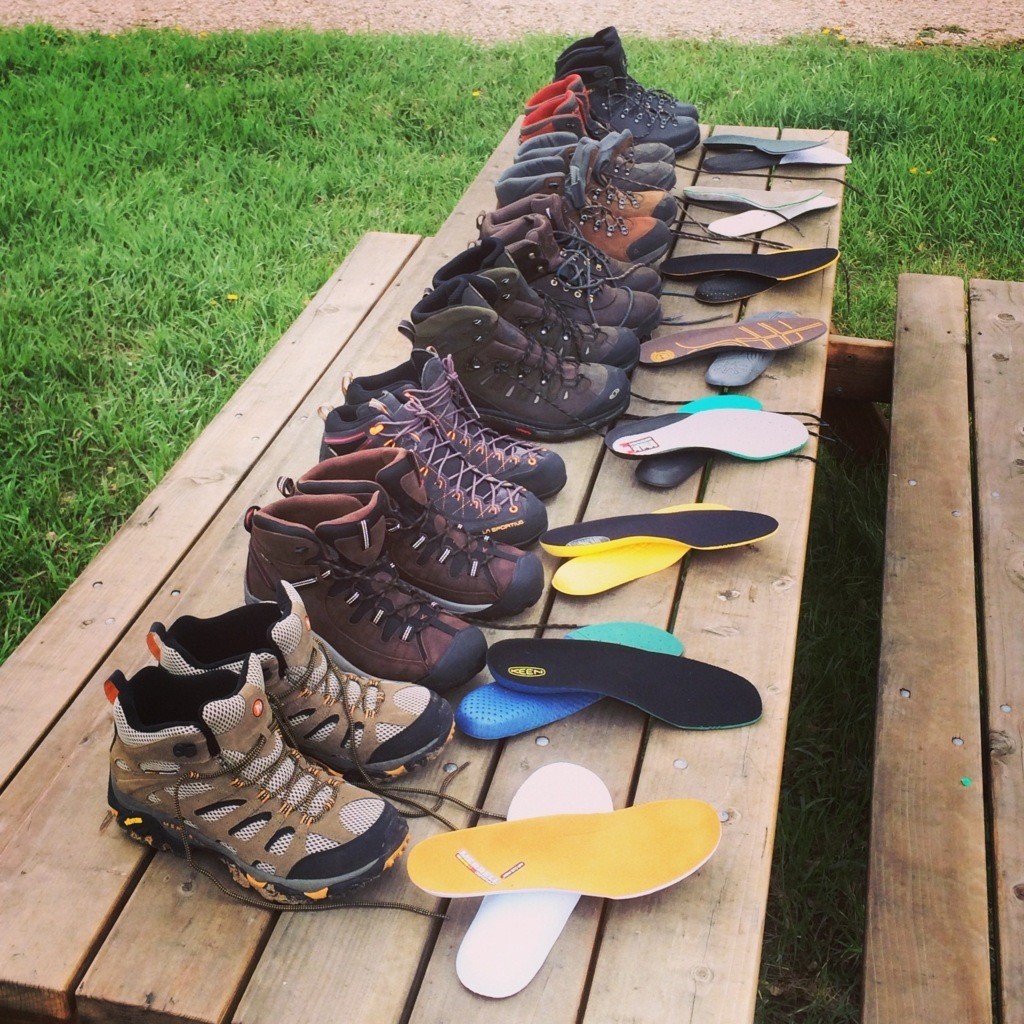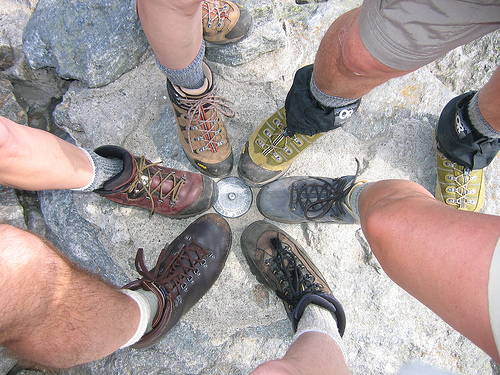Not everyone or every hike needs the same kind of hiking boot. In fact, some hikes don’t even require a boot, just a good walking shoe.
The key is thinking through the type of hike you are planning to do, getting good advice from a reputable store and trying on lots of styles until you find the perfect fit!
The comfort of hiking boots depends on the fit, the correct shape for your foot and enough (but not too much) padding. The principles of boot ergonomics should be kept in mind.
1) Padding on the tongue should be ample but relatively stiff so the pressure from the tight laces doesn’t cause discomfort on the top of your foot.
2) The tongue on a rigid-soled shoe should have more padding than on a softer soled shoe to counter-act the torque created. If there isn’t enough padding on the tongue on a stiff-soled boot it can become painful to walk on steep uphill or long downhill hikes.
3) Often overlooked (because it’s well hidden!) is internal ankle padding. This is a critical component of a comfortable hiking boot. Your ankles lack fatty, cushioning skin layers, but flex and fold thousands of times every day. Look for decent padding on both sides of the ankle joint for the best support and comfort.
4) Most blisters happen in the heel area, mainly due to poorly broken in boots, heel lift or slippage from a too-loose fit around the heel, overly stiff soles or poorly molded heel cups. To avoid blisters on the trail, break your boots in well before going on your hiking holiday (better they looked “well lived in” rather than be shiny and new!) and have any issues corrected before you leave.
5) Choose a shoe type matched to the type of terrain you are going to encounter. If it varies, or you have frequent hikes planned, better to go with a lighter boot rather than something too stiff or heavy.
Happy trails!









